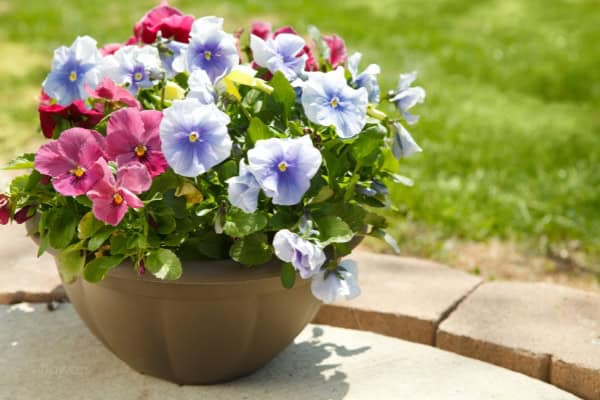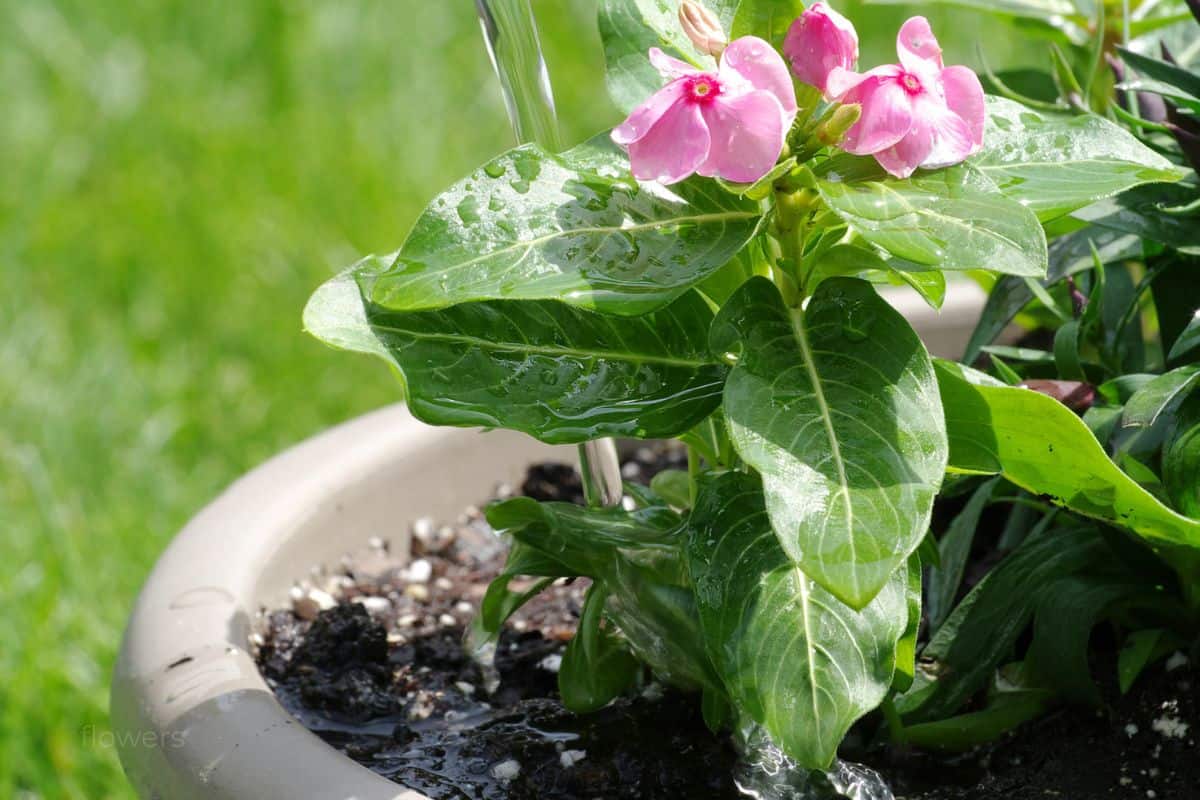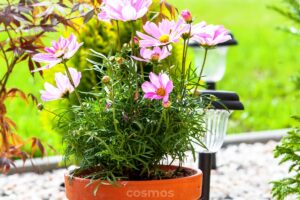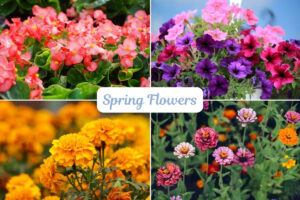This page may contain affiliate links. If you click and buy, we might get a small commission at no cost to you.
Early in spring when your flowers are smaller and temperatures are mild, you may only need to water every 3 or 4 days. As the plants grow and the weather heats up, expect to water once a day. In hot, windy conditions or with small pots, you might even need to water twice a day. Knowing how often to water flowers in pots can be crucial to keeping your plants healthy, preventing root rot, and avoiding the stress of underwatering or overwatering in changing weather conditions.
How to know when your potted flowers need water
Don’t rely on a set schedule. Check the soil by touching the top inch. If it feels dry, it’s time to water. You can also check by sight. Dry soil is usually light brown, while moist soil is darker. With practice, you’ll be able to tell just by looking.
Different containers dry out at different rates. Hanging baskets, small pots, and shallow containers dry out quickly. Larger pots and those in partial shade may stay moist longer. Check each one individually.

How much water to use
Water until it begins to drain out of the bottom of the pot. This is the best way to ensure that the entire root zone has been soaked. For most medium-sized containers (10 to 12 inches wide), this may take up to three-quarters of a gallon.
A light sprinkle across the top won’t cut it. When you only wet the surface, the moisture never reaches the deeper roots. Plants develop shallow root systems and become less tolerant of heat and dry spells. Deep watering trains roots to grow downward, making the plant sturdier and better equipped to handle stress.
Seeing water flow from the drainage hole is your signal to stop watering. That runoff means the soil has absorbed what it can, and the extra is draining properly. If no water drains out, you’re probably under-watering, or your soil has dried out so much it’s repelling moisture (more on that later).
Drainage is critical
Every pot should have at least one drainage hole. Without drainage, roots can rot and plants may die from excess moisture. Avoid pots that trap water at the bottom.

Never let your pot sit in standing water. Use plant saucers only if they can drain and dry out between waterings. Consistent soggy conditions can suffocate roots and invite disease.
Best time of day to water
Morning is the best time to water. It gives plants time to absorb moisture before the heat of the day and allows foliage to dry, reducing the risk of disease.
If it’s after 6:30 p.m. and the plant isn’t wilting, it’s usually safe to wait until morning. If it’s clearly dry and drooping, go ahead and water it that evening.

How to water less often
- Use larger pots with more soil volume
- Choose moisture-retaining soil or add water-holding crystals
- Move pots out of harsh afternoon sun
- Cluster containers together to reduce evaporation
Wind can dry out containers quickly, especially hanging baskets. On windy days, check more frequently and be prepared to water again in the afternoon.
How to rehydrate dry pots
When soil gets too dry, it can shrink and pull away from the sides of the pot. Water may just run down the gap without soaking in. To fix this, soak the whole pot in a tub of water until the soil re-expands and holds moisture again.
If soaking isn’t practical, try watering in stages. Water the plant generously, wait 30 minutes, water again, then wait another 30 minutes and water a third time. This allows moisture to slowly soak into the root ball.
Quick watering checklist
- Always use pots with drainage holes
- Water when the top inch of soil is dry
- Water deeply until it runs out the bottom
- Never leave pots sitting in standing water
- Water in the morning for best results
- Use larger pots to reduce watering frequency
Fertilizing container flowers
Most potted flowers benefit from regular feeding. Use a water-soluble fertilizer every 7 to 10 days or apply a slow-release fertilizer once per season. Always water first, then fertilize, especially in hot weather.
When you understand how often and how deeply to water, your potted flowers will thrive with less guesswork and better results all season long.
Wrapping up
Whether you’re growing zinnias in pots or cosmos, mastering your watering routine is one of the simplest ways to help your plants thrive. Consistent, deep watering supports healthy roots, better blooms, and fewer problems across the season.



